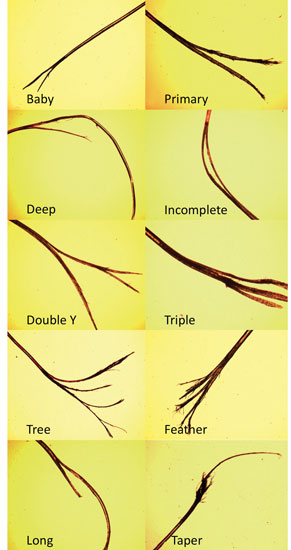
Smart Ways to Remove Stripped Screws and Easily Fix Your Projects in 2025
Stripped screws can feel like a nightmare, turning simple DIY projects into frustrating challenges. Knowing how to remove stripped screws is essential for any handyman, DIY enthusiast, or homeowner. Luckily, various tools and techniques can simplify this process, allowing you to proceed without tearing your hair out. This article will guide you through the best techniques for removing stripped screws, innovative tools designed for stripped screw removal, and practical solutions for fixing your projects seamlessly.
From the humble rubber band technique to advanced screw extraction tools, we’ll cover every aspect you need to know. We’ll also touch on safety tips to keep in mind while undertaking any screw extraction tasks. By the end of this guide, you'll be equipped with a variety of effective methods for stripped screws and useful hacks to enhance your DIY skills. Let's get started!
Essential Tools for Stripped Screw Removal
Understanding the tools at your disposal is crucial when it comes to tackling stripped screws. Various stripped screw removal tools cater to different situations and levels of difficulty. From traditional techniques to modern gadgets, equipping yourself with the right tools will boost your efficiency and effectiveness.
Choosing the Right Screw Extractor
A screw extractor is a specialized tool designed for removing stubborn screws. These extractors come in different sizes and types, and using the right one is important for successful removal. Most extractors operate by drilling into the screw and allowing you to twist it out. Make sure to select an extractor that fits the screw size for optimal results.
Innovative Stripped Screw Removal Tools
In addition to traditional screw extractors, there are several innovative tools designed to make stripped screw removal easier. Tools like socket extractors and left-handed drill bits provide additional options when faced with challenging screws. Experimenting with these alternatives can yield surprising success, especially when conventional methods fail.
Using Common Household Items
Surprisingly, many household items can assist in stripped screw removal. Tools like rubber bands, duct tape, or even a jar lid can provide the grip needed to extract a stripped screw effectively. For example, the rubber band method involves placing a thick rubber band in the screwdriver’s head to create additional friction, making it easier to turn the stripped screw.
Safety and Preparation Tips
Before starting the screw removal process, ensure you have the necessary safety gear. Safety goggles will protect your eyes from debris, while gloves can guard against sharp edges. Moreover, understanding the structure and material of the screw and surrounding area can help avoid further damage during extraction.
Step-by-Step Guide to Selecting Tools
To select the ideal tool, follow these steps: Identify the screw type and the damage it has incurred. Then decide if conventional methods will suffice or if you should employ specialized tools. If you're uncertain, consult online guides for further insights on user-friendly extraction methods.
Top Techniques for Removing Stripped Screws
Building upon tools, we now explore effective methods for stripped screws. From non-invasive techniques to more advanced approaches, utilizing the right strategy significantly impacts your success. Understanding these methods is key to speeding up your home repairs.
Apply Penetrating Oil Solutions
For rusted stripped screws, applying penetrating oil acts as a crucial first step. This oil seeps into the threads, loosening rust and grime, which can often prevent screw movement. Let the oil sit for 10-15 minutes before attempting to turn the screw again for the best results.
The Heat Method for Stubborn Screws
Applying heat is an effective method for extracting rusted or stripped screws. This technique involves using a soldering iron or heat gun to expand the screw slightly, which may break free any rust or grime that binds it. Ensure to be cautious when using heat and avoid igniting flammable materials nearby.
Drilling Out Stripped Screws
If other techniques fail, drilling may be the best option. Utilizing a reverse drill bit specifically designed to extract stuck screws can save the day. Begin drilling slightly inside the screw head while applying steady pressure. This method is best for stubborn screws, especially those heavily rusted.
Utilizing the Left-Handed Drill Bit
Another advanced technique involves using a left-handed drill bit. Unlike standard drills, left-handed bits are designed to turn counterclockwise, which can naturally unthread some screws as you dig in. This method is especially advantageous as it often reduces the risk of further damaging the surrounding material.
Common Mistakes to Avoid
During the screw removal process, a few common pitfalls can thwart your efforts. Avoid excessive force, as this can damage the screw further or break the extractor tool. Additionally, ensuring you have the right-sized tool for the screw will prevent issues related to a poor fit or improper technique.
Practical Tips for Fixing Stripped Screw Holes
Fixing stripped screw holes may be necessary after removing a stubborn screw. Knowing how to manage these repairs is just as important as the extraction process itself. Here are some practical tips to restore screw holes safely and effectively.
Using Epoxy to Reinforce Holes
Applying epoxy provides a robust solution for fixing stripped screw holes. Mix the epoxy and inject it carefully into the damaged area. Once it dries, you can safely reinsert screws into the reinforced hole, enhancing the surrounding material's hold on the screw.
Wood Glue and Wooden Dowels
For wooden surfaces, using commercial wood glue along with wooden dowels is effective. Drill out the damaged screw hole, insert the dowel coated with glue, and let the solution set. This creates a fresh surface to reinsert a screw.
Utilizing Thread Inserts for Metal
For metal surfaces, thread inserts provide a sophisticated solution for accommodating stripped holes. These inserts create new threads inside the damaged hole, allowing screws to hold securely. Proper installation of these inserts can greatly improve the reliability of the screw holes long-term.
Assessing Material Compatibility
Understanding material compatibility is essential when repairing stripped screw holes. Ensure that the method used fits the material at hand, whether it’s wood, metal, or plastic. Choosing an inappropriate method can lead to further problems and potential damage.
Preventing Future Stripped Screws
Taking steps to avoid stripped screws in the future is critical for any DIY enthusiast. Prioritize using the right screw size, ensuring tools are compatible with screws, and never overtightening screws. Leveraging preventive measures will enhance your projects' longevity and performance.
Emergency Solutions for Stripped Screws
In urgent situations where time is of the essence, knowing emergency stripped screw removal methods can be invaluable. Whether you’re in a bind in the middle of a project or need a quick fix, these strategies will help you work efficiently.
The Rubber Band Hack
In emergency situations, the rubber band technique surfaces as a handy hack. Place a rubber band between the screwdriver and the stripped screw head to gain extra grip. This method is efficient for smaller screws or when you need a quick fix during a project.
Using Pliers for Grip
Fitting a pair of pliers directly onto the head of a stripped screw can sometimes provide the torque needed to remove it successfully. This technique works best for screws that are easily accessible and not buried deep within a material.
Employing the Walnut or Paraffin Wax Method
In wood applications, using a walnut or paraffin wax provides a quick solution for sticking screws. Rubbing the screw head may facilitate better grip and movement, reducing the chances of further stripping the head.
Quick Drill Techniques
In emergency uses, having a compact drill on hand allows for quick action. Lightweight and portable, a battery-operated drill can quickly dismantle a project or secure hardware. Just ensure you have the right drill bits handy for this job.
Assessing the Damage
If you face ongoing struggles with stripped screws, it’s essential to assess the damage properly. Understanding how the screw became stripped allows you to adjust your approach for future projects. Sometimes, reevaluating your techniques can support better results in home repairs.
Answering Your Most Common Questions
Throughout this guide, we’ve answered key methods and solutions for removing stripped screws. However, many DIY enthusiasts have specific questions that can streamline their experiences. Here are some frequently asked questions that further clarify the essentials of stripped screw removal.
What is the best method for removing stripped screws?
The best method varies based on the situation. Using an extractor tool is effective, but applying penetrating oil or using heat can help too. It's critical to assess the surroundings and conditions before proceeding.
Can I use a rubber band to help remove stripped screws?
Yes, a rubber band can provide additional grip when placed between the screwdriver and stripped screw head. This is a simple solution and can be immensely effective for smaller screws.
What should I do if my screw extractor breaks?
If a screw extractor breaks within the stripped screw, consider using a left-handed drill bit or a different extraction method to remove both the screw and the extractor piece simultaneously. Case-dependent strategies will yield better recovery rates.
How can I prevent screws from stripping in the first place?
To avoid stripping screws, ensure you’re using compatible tools and sizes, drill pilot holes for larger screws, and apply consistent torque without over-tightening. Practicing these methods can enhance your overall experience.
Where can I find the right stripped screw removal tools?
Finding the right tools is straightforward. Local hardware stores and online platforms are excellent resources for sourcing various extracted tools. Be sure to review product specifications to ensure you select the best fit for your needs.
For more detailed step-by-step guides, check out additional resources [here](https://howeasy.info/?p=1653) and [here](https://howeasy.info/?p=1648).

